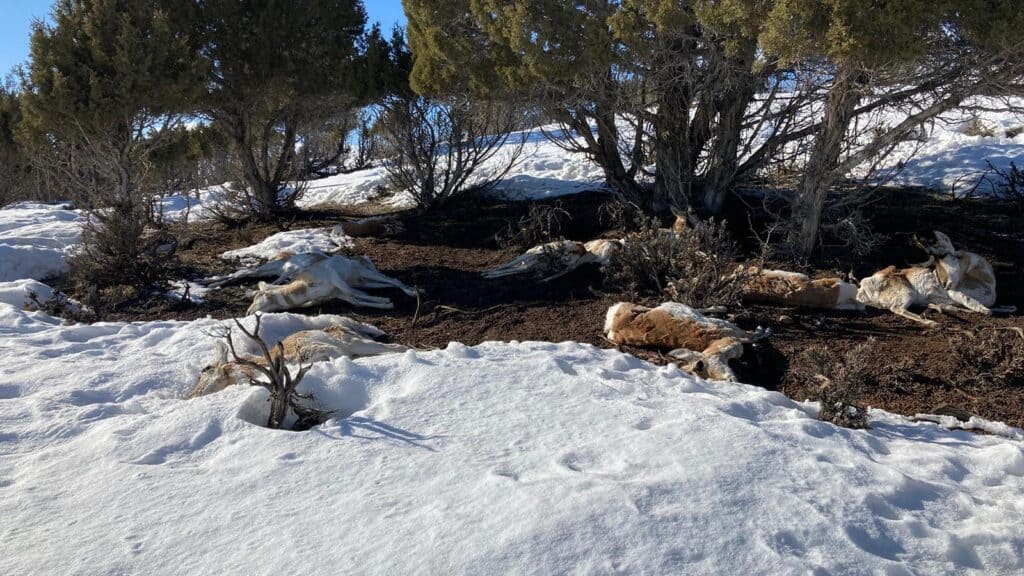
Bad Winter for Wildlife
This winter has been very hard on wildlife in Wyoming and Colorado.
The wildlife winter kill in southcentral Wyoming is the worst anybody there can remember, some locals are saying.
“It goes on for miles: dead animal after dead animal after dead animal,” state Sen. Larry Hicks, R-Baggs told Cowboy State Daily on Wednesday. “The antelope are dying by the thousands. Starvation is an ugly thing.”
Outfitter and pilot Bo Stacks said that at higher elevations, he’s seen even hardy bull elk struggling to survive.
“Usually the elk are pretty tough and don’t have much die-off,” he told Cowboy State Daily. “There’s still 4 feet of snow on the high ridges. When I fly over, they don’t even look up because they’re so weak. They don’t even do anything.”
In addition, near Pinedale a bacterium, Mycoplasma bovis, has killed more than 200 pronghorn.
The Question of Genetic Purity.. re Bison
From this Wall Street Journal essay..
Native American reservations across the Great Plains support a growing number of the animals that the Blackfeet call Iinnii, and today the total U.S. bison population is estimated at 500,000. It’s a huge conservation success, but it comes with a twist with far-reaching implications for species recovery: Genetically, these animals are different from their wild ancestors, with a measurable portion of their DNA coming from cows.
Hybrid species—and especially species hybridized to satisfy human needs—are valued less by conservationists than species with their original genetic legacy intact. To suggest that a hybrid bison riddled with cattle genes is the same animal that roamed the Plains in Paleolithic times would be, for many people, to commit wildlife heresy, like saying the difference between your neighbor’s kitty and a Himalayan snow leopard didn’t matter.
What struck me about this was the idea that non-human manipulated hybrid species would be of less value than those with the “original” intact. Especially since we are hybrids ourselves.. in the words of Wikipedia
Introgression of DNA from other lineages has enabled humanity “to migrate to, and succeed in, numerous new environments”. Therefore, a strong case can be made that hybridization was an essential driving force in the emergence of modern humans.
Evolution is a process and hybridization can help it along… “intactness” (or a specific genetic array) is a function of a particular time and place. And sometimes conservationists intentionally hybridize to generate more genetic diversity in small populations (e.g. the Florida Panther.
Horses in North America.
As it turns out there is debate as to whether wild horses count as native wildlife.
You may have read about this one. Here’s a link to the full text of the publication in Science. Basically, they think the reintroduction of horses came from the Spanish, and that Indigenous trade routes led to horses being throughout western North America by the time other English speaking settlers showed up.
It’s a little confusing, though, because there were headlines like “Native Americans corralled Spanish horses decades before Europeans arrived“. And of course, you would think, “aren’t the Spanish Europeans?” but what they mean is that horses were spread out around western North America before later European settlers showed up.
“The key element in describing an animal as a native species is (1) where it originated; and (2) whether or not it co-evolved with its habitat.” I don’t know whose rule this is, but I think it neglects the fact that horses went extinct in this habitat, and were (much later) artificially returned. Horses that avoided total extinction by leaving areas that could no longer support them are a different story from species that humans artificially saved from extinction in captivity and then reintroduced to their still suitable habitat.